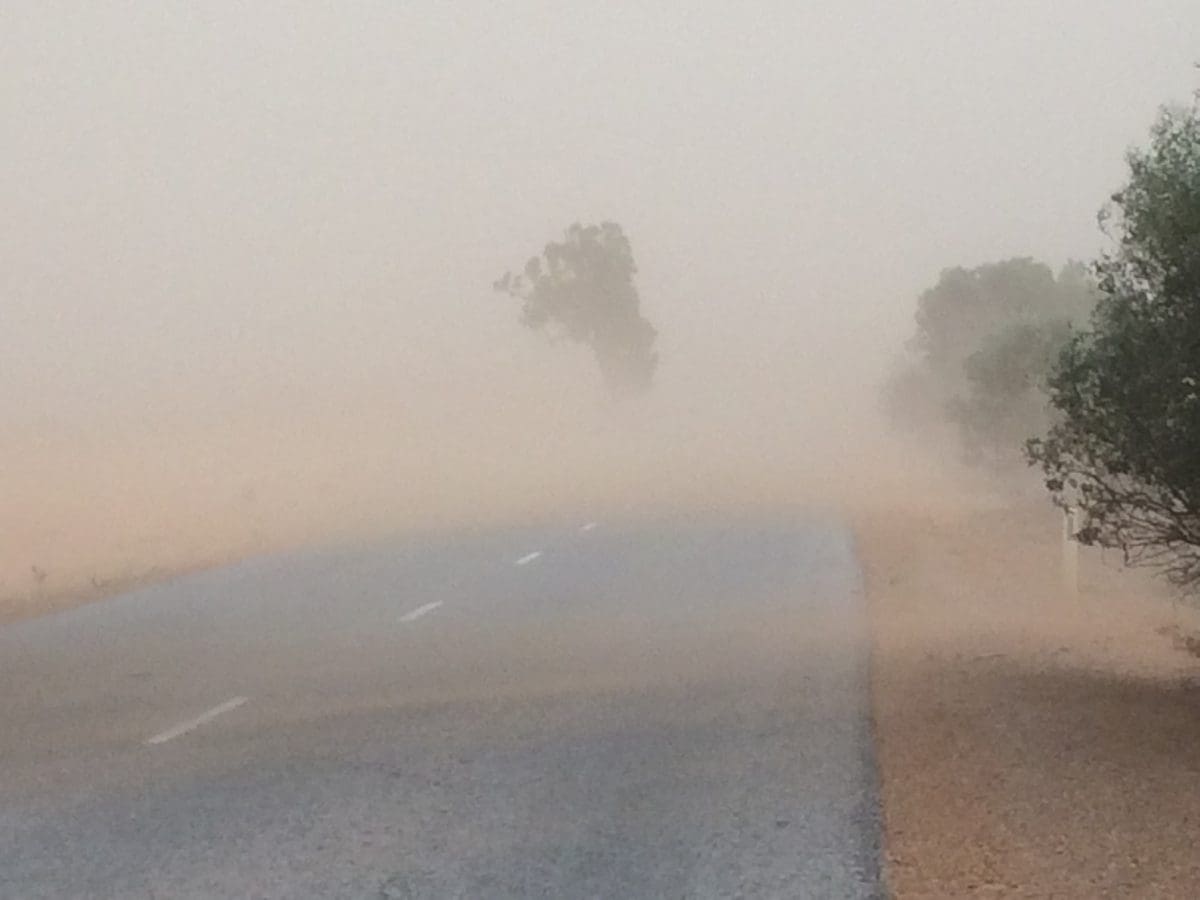
Landholders have been encouraged to take action to prevent erosion events, like this one north of Geraldton in May 2020, and the loss of valuable topsoil, impacting on soil condition, productivity and profitability.
WITH another below average rainfall year in many Western Australian grainbelt districts, measures undertaken during harvest will help prevent a repeat of the widespread topsoil losses from wind erosion experienced earlier this year.
WA’s Department of Primary Industries and Regional Development (DPIRD) recommends landholders maintain at least 50 per cent stubble or pasture ground cover, of which at least 30 per cent should still be anchored at the beginning of autumn.
DPIRD principal research scientist Paul Findlater said stubble management would be crucial to maintaining adequate ground cover to prevent soils from being blown away.
“While landholders may be tempted to graze stubbles, research has shown that with improved harvesting practices reducing grain spillage, alternative feed options may be more profitable,” he said.
“Stubble retention has other benefits, including improved rainfall infiltration, reduced soil water loss, improved soil organic matter and soil structure and protecting emerging seedlings from sand blasting in the new season.”
Harvesting short and patchy crops may be a challenge for grain growers in some areas, for whom machinery modifications may be required to ensure adequate ground cover is left to prevent erosion.
Other post-harvest measures to minimise the risk of wind and water erosion include keeping machinery and vehicles off high-risk paddocks, and removing stock where ground cover is less than 50 per cent, to prevent the soil surface from becoming detached.
“Small bare areas in otherwise well covered areas, like sheep camps, gateways and around watering points, can also lead to severe blowouts,” Mr Findlater said.
“It is important for livestock producers to have a plan for the next 12 months to manage grazing pressures and ensure there is at least 600 kilograms per hectare of dry matter remaining on pasture paddocks,” Mr Findlater said.
The department recommends delaying soil amelioration until the soil is moist and sowing a cereal cover crop immediately afterwards, to reduce the risk of wind erosion.
“Deep tillage equipment works more effectively and efficiently in moist soil, and there are other benefits, including less topsoil water repellence, options for non-chemical weed control and the rapid establishment of a cereal cover crop,” research scientist Stephen Davies said.
“Soil amelioration that combine deep tillage and seeding of a cereal cover crop in a one-pass operation or seeding immediately after soil renovation have been particularly effective at reducing the wind erosion risk.”
Source: DPIRD
More advice about the timing of soil amelioration can be found at Soil inversion to ameliorate soil water repellence.
More information about managing wind erosion and navigating the months ahead visit the Season 2020 webpages via agric.wa.gov.au.
The Grazing Stubbles and Dry Pasture article on the Season 2020 webpages provides a useful overview of the nutritional value of stubbles and pastures and the importance of feed budgeting.
A range of options to achieve a quick, clean cut from a low crop has been collated in the Harvesting Short, Patchy Crops article.
The Managing Soil Erosion in Southern Western Australia web page has several seasonal livestock management options, including advice on feed budgeting, confinement feeding, feedlotting, agistment and selling stock before stock and paddocks lose condition.

HAVE YOUR SAY